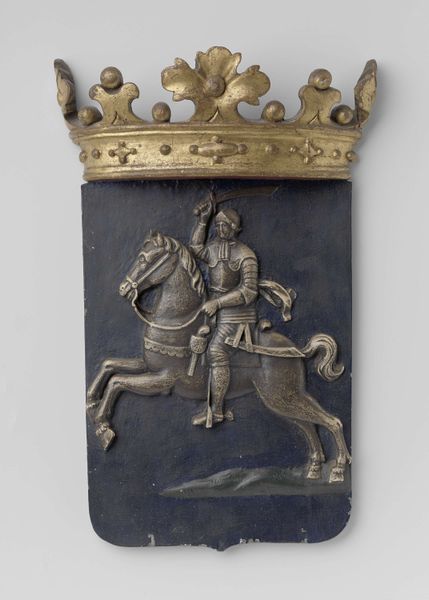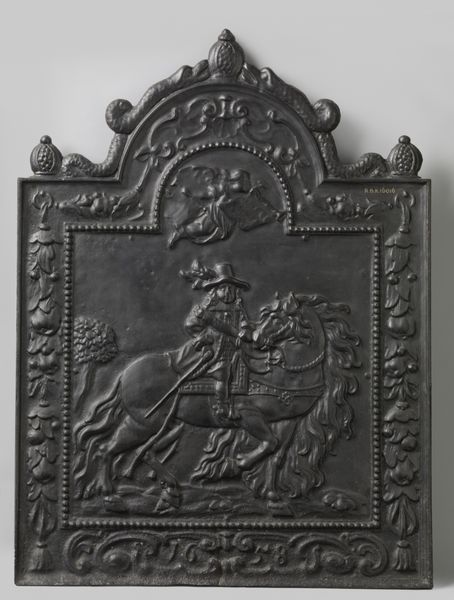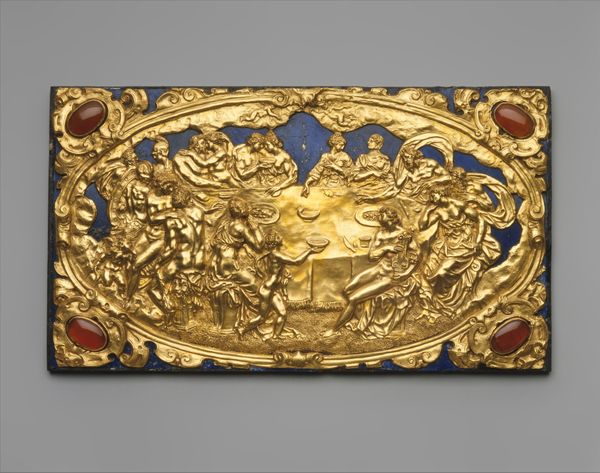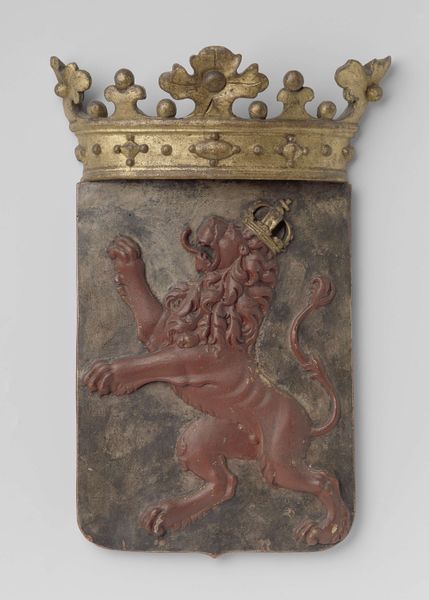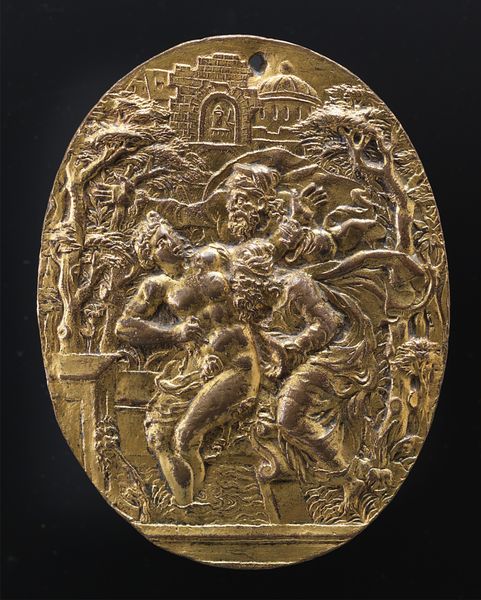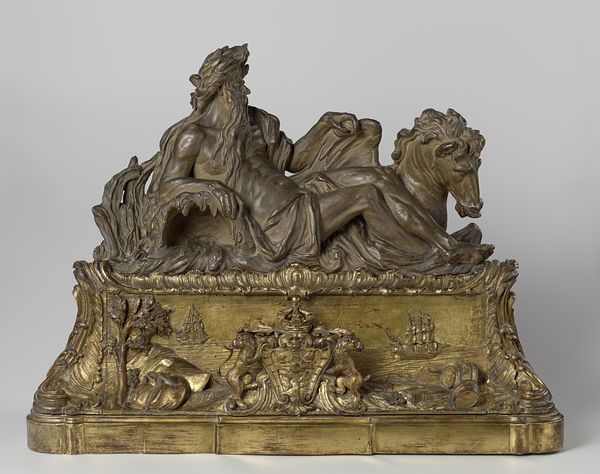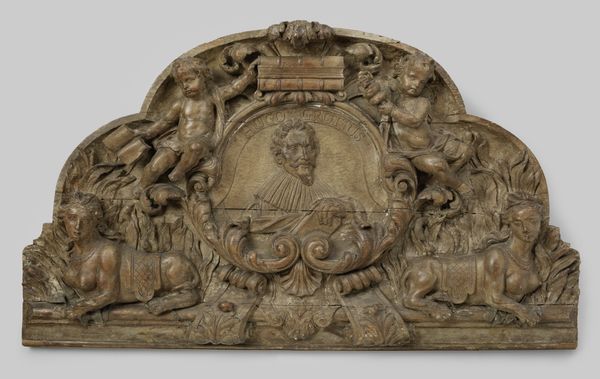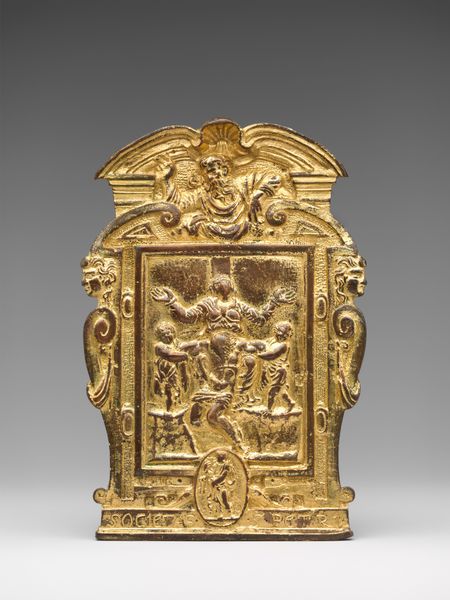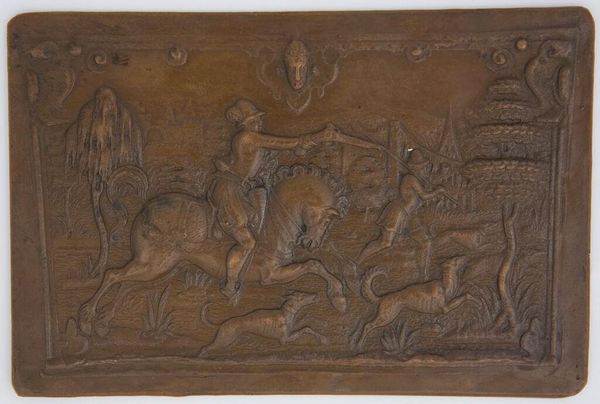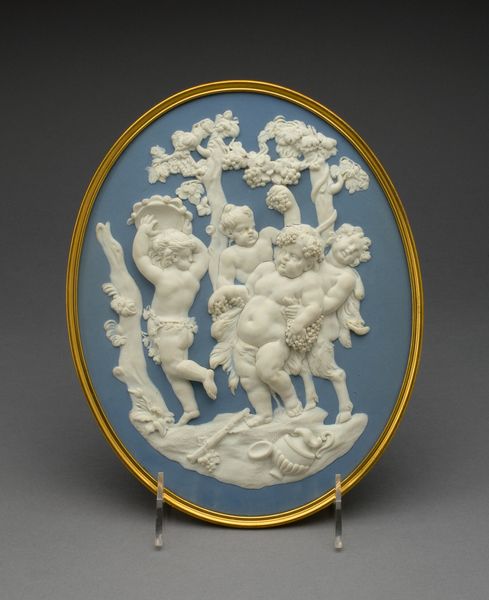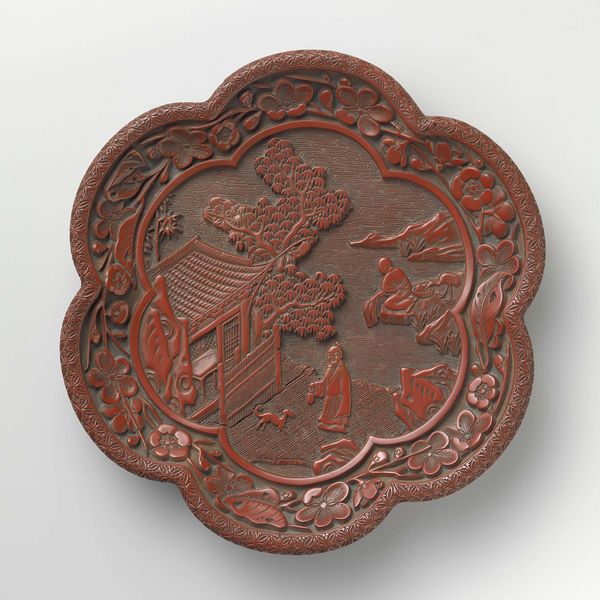
carving, relief, sculpture, wood
#
carving
#
muted colour palette
#
baroque
#
worn
#
sculpture
#
relief
#
figuration
#
sculpture
#
wood
#
history-painting
Dimensions: height 277 cm, width 378 cm, depth 120 cm, weight 600 kg
Copyright: Rijks Museum: Open Domain
Curator: Look at this intriguing relief! This is a stern carving dating from about 1663 to 1664, salvaged from the Royal Charles and on display here at the Rijksmuseum. Editor: There's a regal air, though somewhat distressed by age, no? The muted palette feels weighty. Curator: Indeed. Its materiality speaks of a maritime past and royal power, but to consider its origin further, the Royal Charles, a prestigious English warship, was seized by the Dutch in 1667 during the Second Anglo-Dutch War. This carving, essentially a trophy, represents a key historical and political turning point in Anglo-Dutch relations. Editor: Fascinating how a singular image can crystallize national pride and military conquest. I notice the British coat of arms at the centre. The lion and unicorn symbols remain powerful cultural markers even now, embedded in heraldry and national identity. The motto *Dieu et mon droit*--God and my right--also carries layers of inherited historical weight. Curator: Exactly! The carving embodies power dynamics but from whose perspective? To the English, it’s a painful reminder of loss, while to the Dutch, it’s a symbol of victory, disrupting established hierarchies. This wooden relief becomes a contested object, embodying the complex and often contradictory narratives of history and power. Its survival challenges us to re-evaluate established historical interpretations, opening the door for conversations about colonial power structures, national identity, and the lingering effects of conflict. Editor: And what of the style? Baroque detailing lends itself well to portraying grandness and spectacle, even on a salvaged artifact. The wear adds an elegiac note that really speaks of cultural memory etched through visible time. It triggers reflection on how nations mythologize victories, but less so, defeats. Curator: Yes. This carving’s function shifted dramatically after its capture; from a symbol of English naval dominance to a war trophy showcased in the Netherlands. Analyzing the carving outside the traditional art historical lens opens possibilities for discussing the role of cultural property in conflict and national identity, encouraging us to question whose stories are privileged in museum displays. Editor: In essence, what’s striking is that, though fractured by history, the symbolic vocabulary still transmits strong echoes. Curator: Absolutely. It’s a conversation piece, prompting deeper examination of the complexities surrounding history, memory, and the politics of representation.
Comments
rijksmuseum over 2 years ago
⋮
These arms of King Charles II of England once adorned the stern transom, or ‘counter’, of the English flagship the Royal Charles. The vessel was captured by Dutch forces in 1667 at its home port of Chatham, near London, and towed over the North Sea to the Netherlands, where it was scrapped. The counter decoration was preserved to commemorate this extraordinary Dutch triumph and England’s defeat.
Join the conversation
Join millions of artists and users on Artera today and experience the ultimate creative platform.
